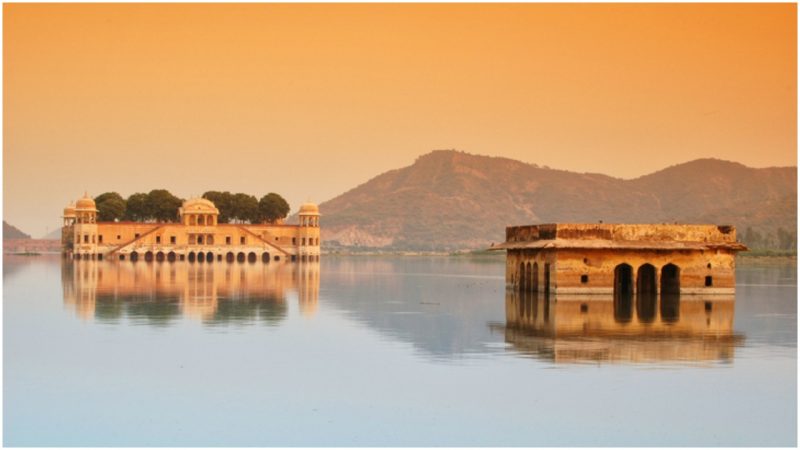The Jal Mahal, or “Water Palace,” in Jaipur city, India, was supposed to be a duck-hunting lodge for the maharajas. It was built for that purpose in the middle of a man-made lake in the mid-18th century. But nature had other plans, it seems.
This impressive monument, one of the most visited and photographed sites in the country, was in a state of decay not too long ago after being abandoned for more than two centuries. Luckily it was saved, and within a few years, if everything goes as planned, could easily be the most exclusive restaurant in the world. But first things first.
How did a spectacular place such as this and as grand as it looks today, resembling a castle that floats serenely on the water’s surface, come to be neglected? How did it get to be ignored to the extent that for a time it was literally drowning in litter and junk?
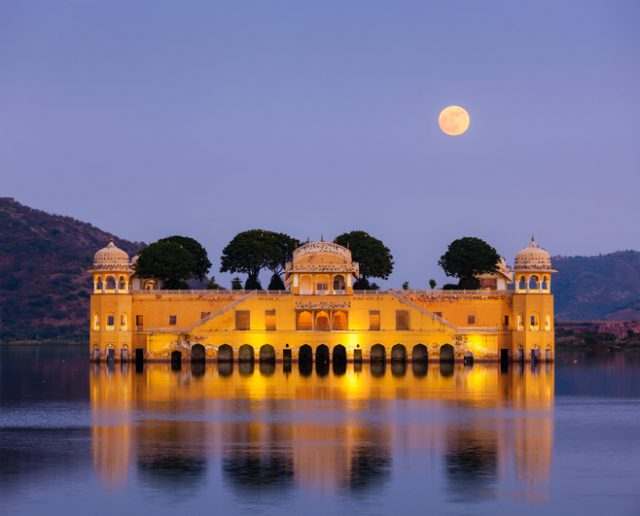
Well, the story goes that by the end of the 18th century a severe drought swept through the state of Rajasthan in northern India. The drought, naturally, brought hardships. It threatened the fragile life of people living in an environment already arid enough. Monsoons were the only thing bringing fresh water needed for survival, and the reservoir was the only thing keeping it when they were gone. The lake, created by placing a dam on the river in the hills nearby in the 16th century, was the sole steady source of drinking water. It was made for that exact purpose.

Unfortunately, monsoons were nowhere to be seen for a while. The water level was slowly descending in front of everyone’s eyes.
In dire need, helped by his faithful followers, the Maharaja reinforced the dam in the hills on the Dharbawati river, east of the lake, to ensure what water was left would stay near the city his father founded. His son, Sawai Pratap Singh, the Maharaja next in line, following in his father’s footstep did the same. In the 1790s he reinforced the dam even further and renovated his favorite lodge where he and his entourage spent their leisure time when they were young. Duck hunting was their sport of choice.

Jaipur was his home, it was his grandfather’s vision of a great city, and at the time was on the rise. Lack of water would have meant a speedy downfall. On the other side, the Jal Mahal was something special for him. Nowhere else was there anything like it–not even in the neighboring historic city of Amer. He aimed to make the place long-lasting and keep the city prosperous.
According to the story, he did everything he could to make sure that when the water level rose, the solid stone walls would stand strong against the lake so when the drought had passed, his favorite place will be as if nothing happened and he can relax and unwind during hunting seasons once again.
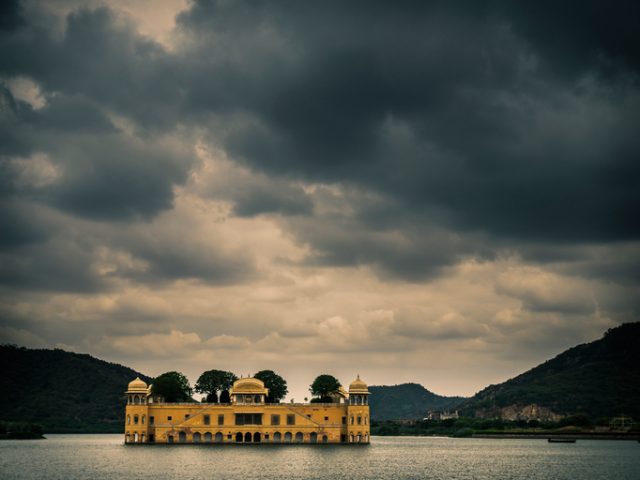
The 19th century began, years passed, and the water inside the lake increased. Everything was going just as planned. Singh could not for the time being unwind at his favorite lounge, but he could do the other thing he vowed to do: to make the city grand, and it was easy now that lack of water was no longer a threat. In 1799, he had finished the impressive beehive-shaped Palace of the Winds (Hawa Mahal) at the very edge of the City Palace and now he set forth to improve the city’s infrastructure.
Secrets of the Medieval Castle.
But then, the long-awaited monsoons came back. They struck with force and fury and stayed for a while this time around. Within months, the water inside the lake rose to such a height that it swallowed the lodge almost completely. There was no hunting ground anymore. There was not even a lodge in sight. To his misfortune, the Raja lost his beloved retreat. The Rajas after him neglected the place altogether. Even when monsoons passed and life was back to normal, the Jal Mahal was forsaken and left to meet its demise. The city was growing rapidly and there were more important matters to be addressed.
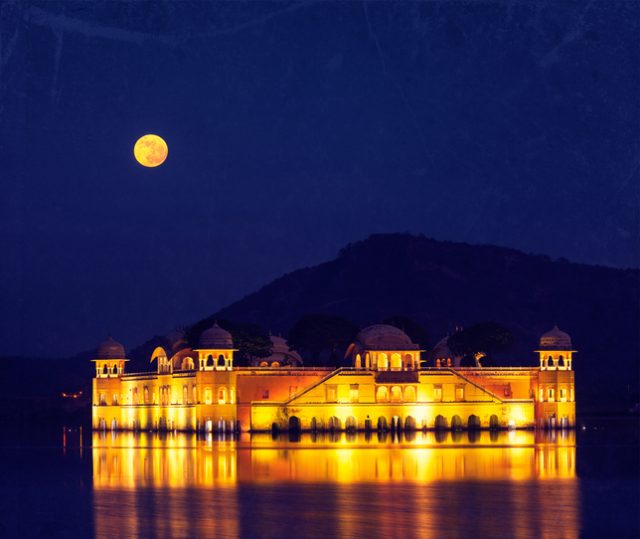
By the mid-19th century Jaipur was approaching 80,000 inhabitants, while just half a century previously there were only a few thousand. By the end of it, there were at least 160,000. The Sanskrit College that opened in the 1860s was attracting scholars from all over the country, and the all-important visit of Prince Edward VII of Wales in 1876, the year when all the city streets were paved in red in his honor to give it that distinguishable pink look it is prized by, meant the inrush would be even greater in the near future.

For a time being a Water Palace inside a lake was the first thing people would see from the surrounding hills of the Aravalli Range when they arrived. And the first thing they’d do was to take a gondola trip in the lake, relaxing amid flocks of flamingos, pintails, kestrels, marsh sandpipers, or gray wagtails, and enjoy what probably was the only serene sight in a city under massive construction.
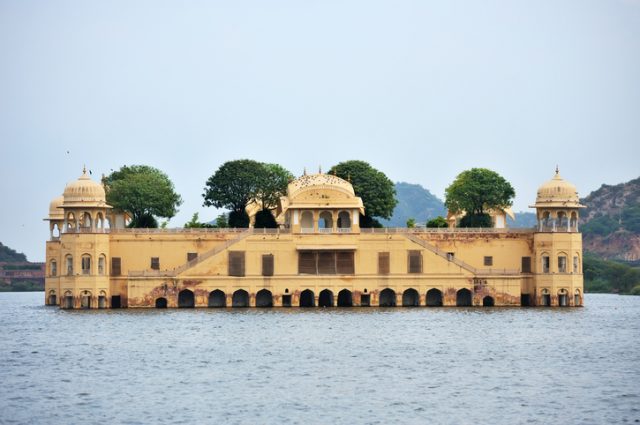
Yet, more were coming. There was no stopping them. The city grew to be home to millions at the turn of the century. Unused, and deserted as a lonesome lifeless statue in the middle of a lake, the Jal Mahal was left at the mercy of millions of people who had no mercy at all. Swift urbanization and an inadequate sewage system made the lake a preferable dumping site for garbage, waste, and raw sewage, which year after year was severely damaging the ecosystem of the lake and the surrounding area.
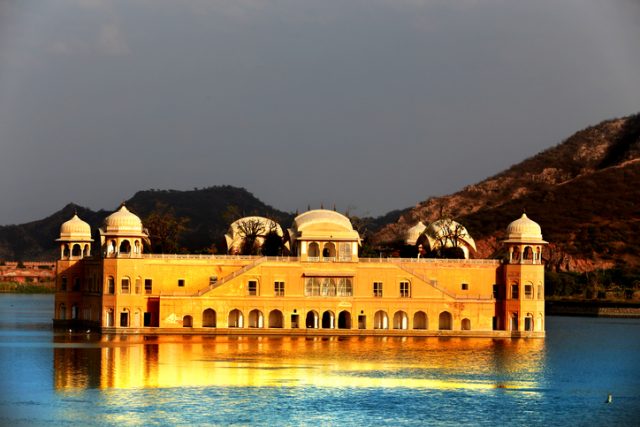
The lake was full of chloride and the groundwater contaminated to the extent that the lake was an environmental health hazard. After a while, the smell became bad enough to keep any visitor away from the splendid palace and the toxins killed every fish inside the lake and bird around the area. The place grew into a real marshland, and the Jal Mahal a grand palace of plastic.
Essentially this is how, according to several existing pages of history and tales retold by the locals over the years, the Jal Mahal ended up submerged four stories underwater and utterly neglected for two centuries. It could have easily slipped into ruins never to be seen again.
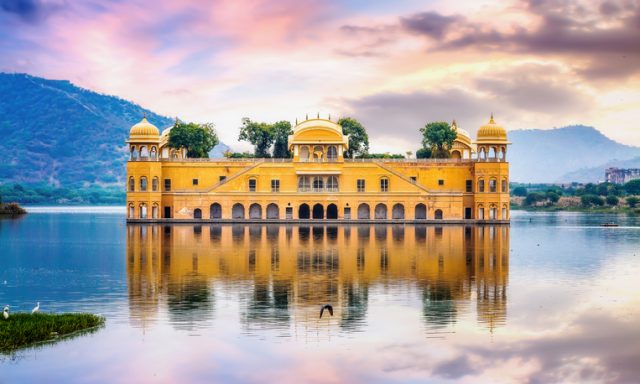
Fortunately enough and due to perfectly orchestrated engineering, the walls held back millions of gallons of water over the course of two centuries, just as Pratap Singh hoped when he reinforced them, and the exceptionally designed and crafted lime mortar prevented water from flowing inside. Those walls stood against everything that was thrown at them. They endured the lake, monsoons, and men. Or more precisely, their waste.
Although it wasn’t serving its purpose and no one was using it anymore, the Jal Mahal was still magnificent.
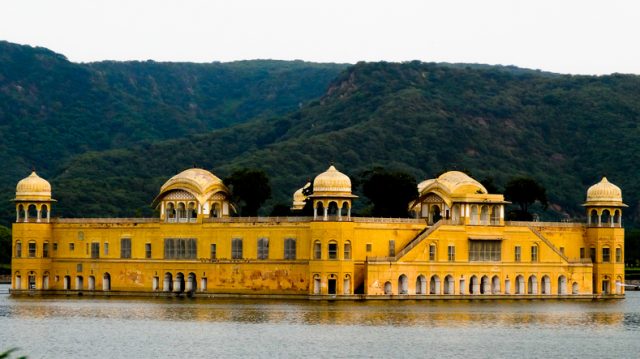
That spark was returned when a private firm owned by a city jeweler aiming to turn the place into a resort and a tourist attraction took over the site in 1999. From 2004 and within 10 years the company managed to clean the lake completely and restore the palace to its short-lived former glory. Fish and birds have returned, and the Jal Mahal top floor peeking out of a clean, deep blue colored lake now once again stands as a wonder to behold. A floating Water Palace that was never meant to be a palace in the first place, but a true marvel that leaves everyone awestruck. Especially at night.
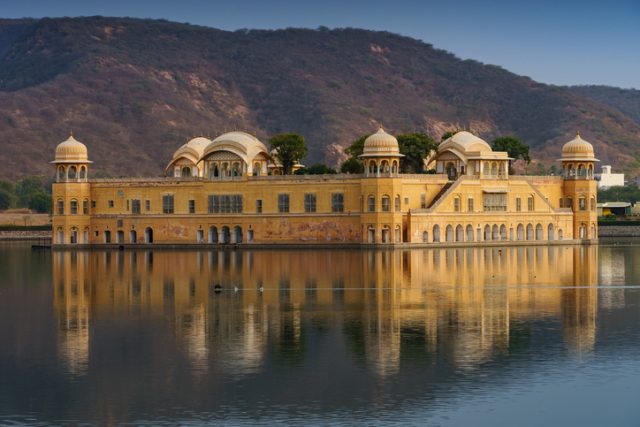
Aside from completely renovating the palace and the rooftop garden, the owners lit up the facade and illuminated the whole place so it looks as if it is something taken out of a fairytale. Plans are afoot to convert it into a restaurant. Jaipur’s culinary delight Jal Mahal, an award-winning restaurant just nearby at the Trident Hotel, is considered by some as the most likely candidate.
Who knows how much it would cost inside for the house specialty. Would it be a guilt-free Galouti Kebab dish or sweet and tasty Dum Aloo Lakhnawi meatballs? No one knows. What’s for certain is the fact that it would be a dish served on a gorgeous palace garden terrace and flavors savored in one of the most prestigious restaurants in the world located in the most unexpected of places. On a lake in the middle of the desert.
